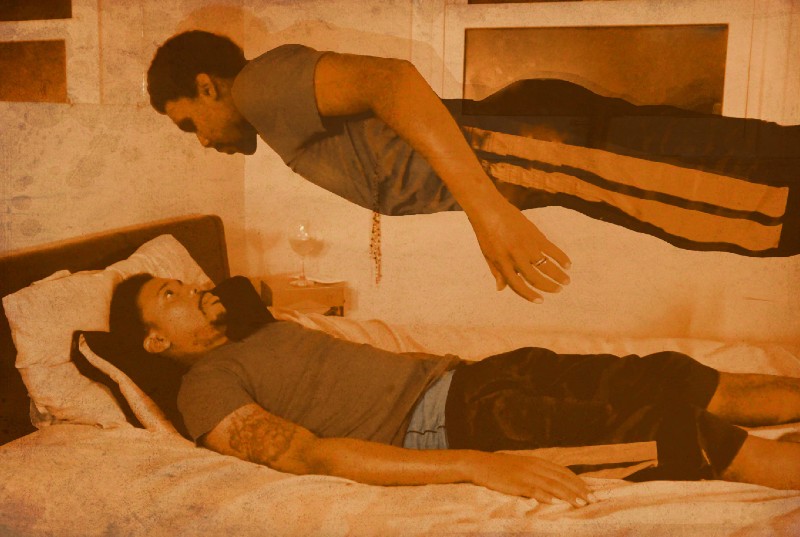Riverside Arts Center’s "Present: An Online Exhibit" offers an egalitarian collection of creative endeavors

Art is essential, whether or not it is created for public display.
All art, whether fine art or craft, is worthy of representation.
Though these two statements seem straightforward, they might be considered controversial in the fine art universe.
Riverside Arts Center’s recent online exhibit, Present, pushes the boundaries of public art in online spaces by eliminating the jurying process and allowing anyone to submit artwork with the expectation that it will be placed in the show. The exhibit's homepage displays a gallery of thumbnail images with brief descriptions of the submissions, which range from regular exhibitors in the Ypsilanti and Ann Arbor area to crafts and Lego projects made among groups of family members. This egalitarian approach offers a fresh perspective on what it means to create art, who this art is for, and what value creativity has when the world no longer resembles the one we know.
Riverside Art Center’s call for submissions asks for work regardless of whether or not the creator is a working artist, and this cosmopolitan approach yielded eclectic results that give viewers a chance to see what creative projects community members have produced during an unprecedented time. The call for art reads:
Artist or not, this exhibit is for everyone! It is unjuried, and all submissions will be included. We are seeking photographs of creative activities that people are doing to stay Present during this sudden and unsettling change of times. This can include photographs of artwork, but is certainly not limited to it. Are you experimenting with your cooking? Building couch forts or cardboard castles with children? Honing your poker skills? Starting a new hobby? Hiking deep into the woods to find amazing sights? Working on poems? Immaculately organizing your closets? Helping the community? Send us pictures! Let’s inspire each other with a display of efforts to keep spirits high and minds engaged.
One submission, a photograph of a blueberry clafoutis by Pamela Erbe, concisely displays the creative fruits of the pandemic. Baking became a popular activity in the early months of lockdown, and for many, the practice is a little bit art, a little bit of science. For some, baking took shape in the form of sourdough, bagels, and even pretzels. In another photographic ode to baking, Nick Tobier’s I can now make a pretzel. Happy to share! had me wishing I could take him up on that offer. In other works, families submitted projects together, such as the outdoor cardboard city placed on the Debord family’s covered porch.
A two-part photographic series by Lisa Voelker records sentimental objects stowed away for safekeeping: Special things, somewhat useless – small trinkets glued to an old jewelry box. Small things I keep and Special things, somewhat useless – photograph from childhood and rings in an old jewelry box. Small things I keep. Voelker’s descriptions are seemingly contradictory, though they capture the essence of collecting: the objects are special but useless, and they are kept regardless of their status as “somewhat” useless, in a curated space, represented again as works of art.
Marlow Jiggaletti’s photo manipulation Sleep Paralysis is used as the cover image for the exhibit page. In the altered photograph, a man lies in bed, with a mirror image of himself floating above his prone figure. In the phenomena of sleep paralysis, the subject is awake, but cannot move. Sometimes, people experience the sensation of another person or dark figure standing over them. Historically, sleep paralysis was often misinterpreted as a range of paranormal events such as demonic visitation by incubi or succubi, ghosts, and more. Artistic renderings of these experiences, such as The Nightmare by Henry Fuseli, are ubiquitous in association with the cultural conception of sleep paralysis. Jigalletti’s image plays on this history, but in 2020-2021, the nighttime visitor most feared is, probably, oneself. Instead of the typical paranormal symbolism, in Jaggaletti’s rendering, the Other is himself.
Sonia Kraftson’s Inside photograph is of an installation inside her living space, which was not meant to be experienced by the public, pandemic or not. The photographic evidence is often all we have of installations in museums and gallery spaces as well, and in this sense, the work comments on the ephemerality of installation as well as the limited ability to physically interact with spaces in public and private over the past year.
These works, and many more, are available to browse online, and just might make you ask, "What is 'art'?" And maybe more crucially, "What is art to us during times of crisis?"
Elizabeth Smith is an AADL staff member and is interested in art history and visual culture.


































